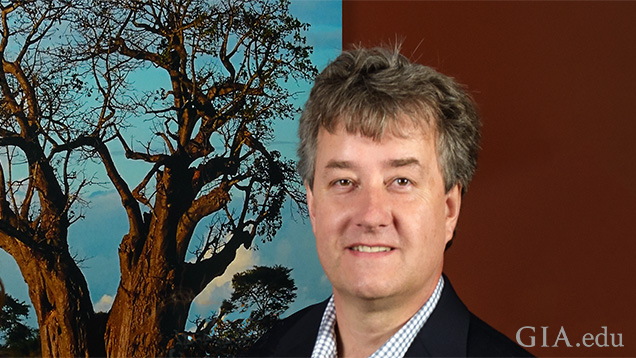Investigations into Corundum and Beryl Color, Jade Artistry, the Chivor Emerald Mine’s History, and Swiss Rhodonite…

Welcome to the Spring Gems & Gemology! Publication was significantly delayed by the COVID-19 pandemic, but we’re very proud to present this issue, which offers a blend of science, art, and history. In our lead article, authors Emily Dubinsky, Jennifer Stone-Sundberg, and John Emmett illuminate the chemistry behind gem corundum’s rich array of colors to reveal the influence of the concentrations of the six identified chromophores found in natural corundum on the depth of color. The authors use quantitative visible absorption spectroscopy and chemical analysis by secondary-ion mass spectrometry (SIMS) to study specially chosen synthetic and natural corundum samples to calculate each chromophore’s absorption cross section. This information is presented as spectra and color-circle arrays, which we hope practicing gemologists will find informative.
“This article provides insight for the practicing gemologist on the influence of six specific chromophores and their concentrations on depth of color in corundum.”
In our second paper, Mingying Wang and Guanghai Shi of the China University of Geosciences (Beijing) present a study of Chinese jade carving artistry ranging from time-honored, traditional techniques to state-of-the-art computer numerical control and 3D replicate engraving. Using data from almost 2,500 contemporary pieces, the authors demonstrate the art’s rich heritage and its continuing innovation.
Next, two more authors from the China University of Geosciences (Wuhan), Yang Hu and Ren Lu, examine the chromophores in blue and yellow beryl using quantitative spectroscopy and trace-element analysis to explore their color-causing characteristics. The authors show that different concentrations of iron ions with various valences and occupancies are most responsible for the gem’s blue to green to yellow colors.
Our following paper offers a change of topic. Karl Schmetzer, Gérard Martayan, and Jose Guillermo Ortiz provide the first of two installments detailing the checkered history of Colombia’s Chivor emerald mine: its abandonment, rediscovery, and intermittent operations by a fascinating cast of characters, including German gem merchant Fritz Klein.
In our final feature article, a team of Italian researchers led by Dr. Franca Caucia offers a study of the chemical, physical, and gemological properties of attractive rhodonite-rich rocks from Switzerland’s Tanatz Alp.
Our regular sections have much to offer, too. In Lab Notes, we describe diamonds with graphitic cavities and corundum inclusions, a clarity-enhanced glass imitating emerald, a large grandidierite, and curious pearls. Micro-World also provides intriguing curiosities, including a diamond with a mobile green diamond inclusion and a pallasitic peridot with iridescent needles. In Diamonds from the Deep, regular contributors Karen Smit and Steve Shirey demonstrate that diamonds are not necessarily forever with an exploration of the dissolution many diamond crystals suffer during transport in kimberlite magma. Our Gem News International section surveys gem materials and events from the 2020 Tucson gem shows, including star peridot, demantoid garnet, emerald, sapphire, trapiche gems, Tucson’s first ethical gem fair, and the results of the 2019 Buccellati jewelry design competition. Please also see the winners of our Dr. Edward J. Gübelin Most Valuable Article Award and this year’s G&G Challenge quiz.
Finally, do make sure you visit our new G&G Facebook group at www.facebook.com/groups/giagemsgemology. Since our February 2020 launch, over 7,000 of you have joined, so if you haven't seen it yet, please check it out. Thank you all for your support and interest!



